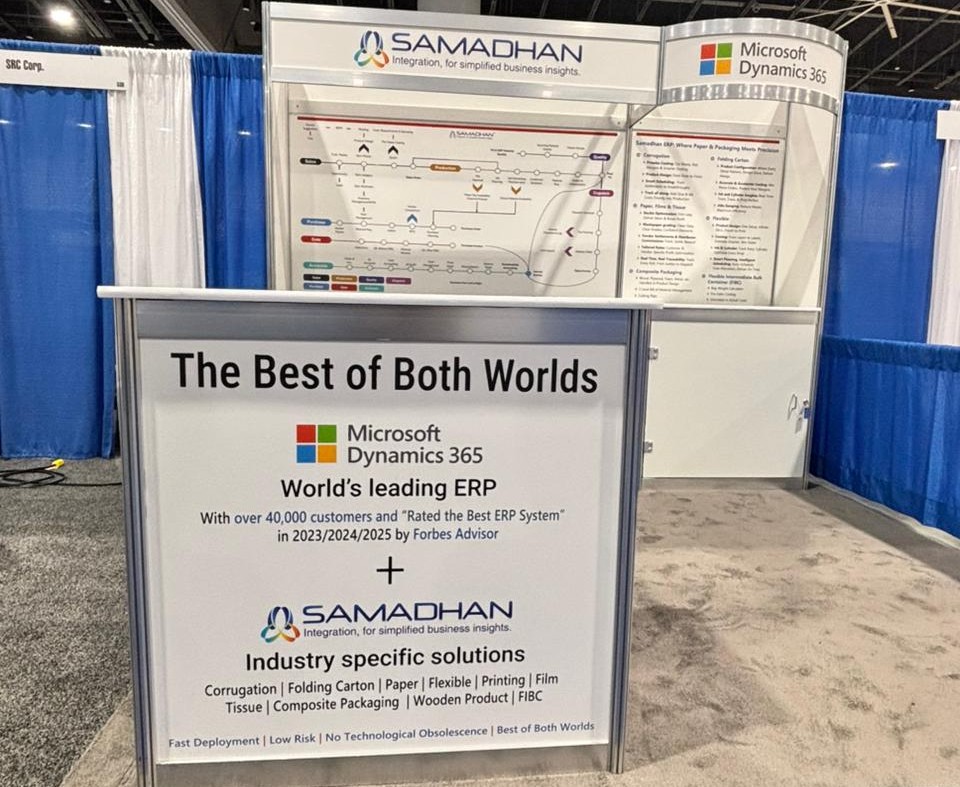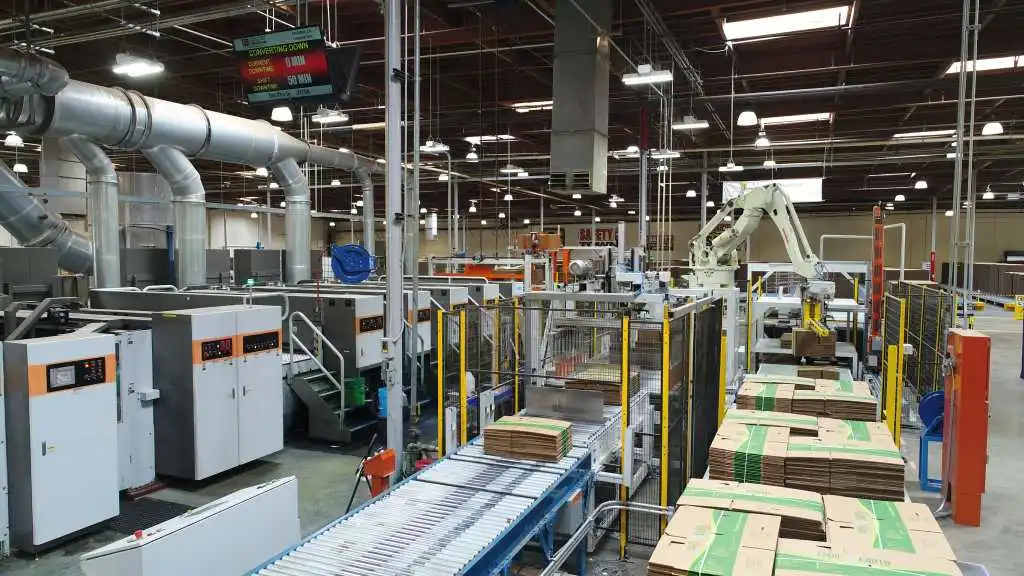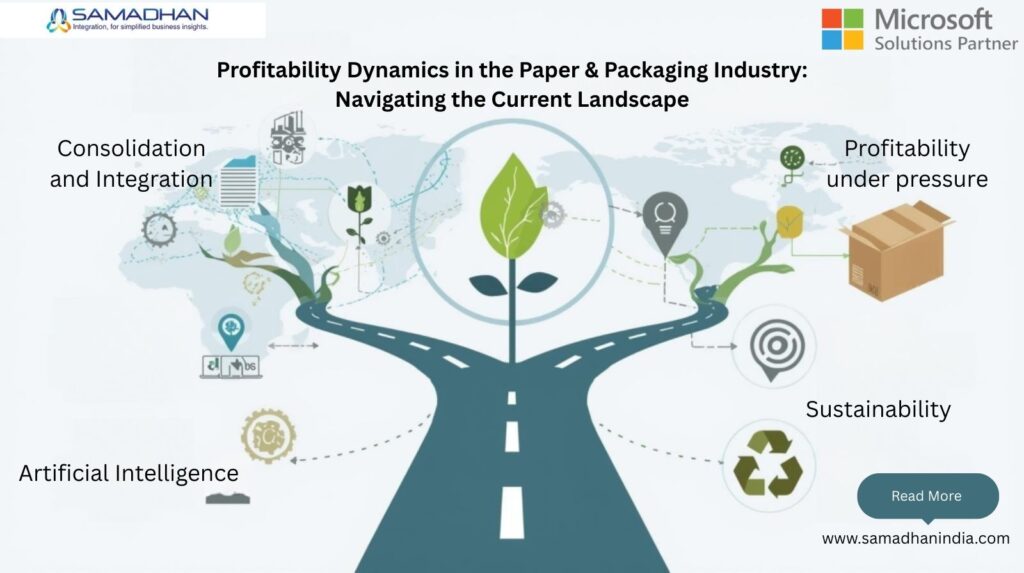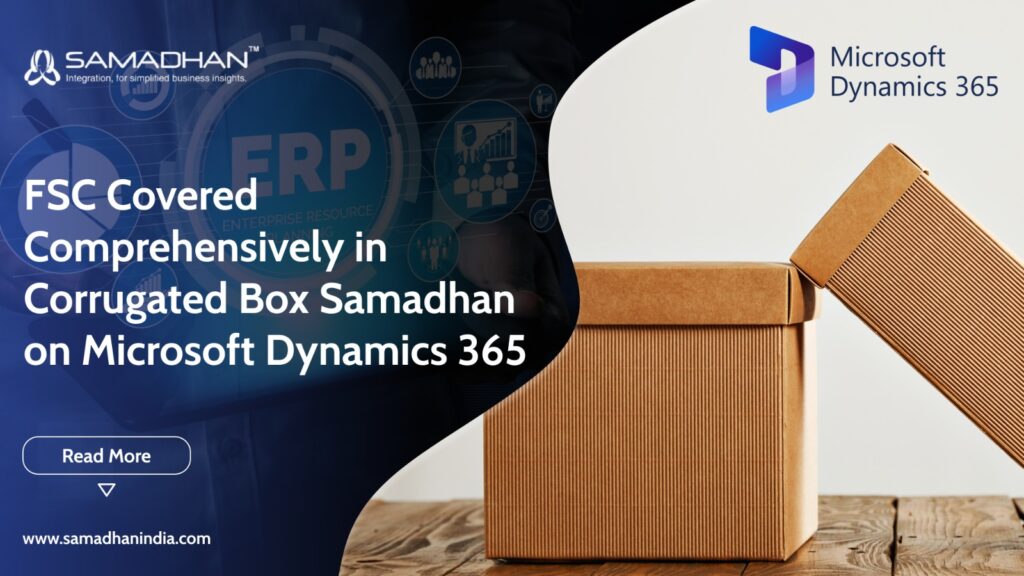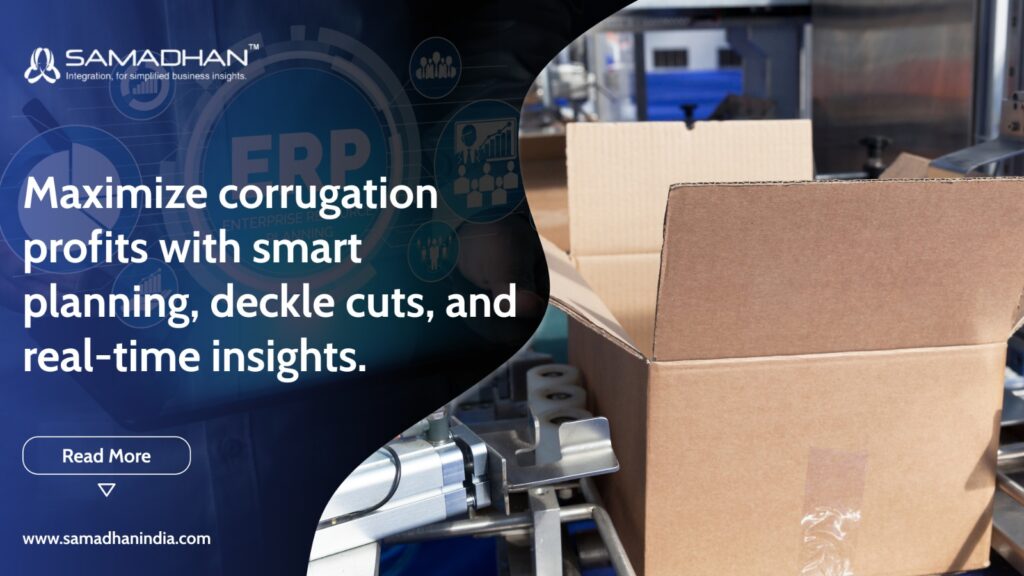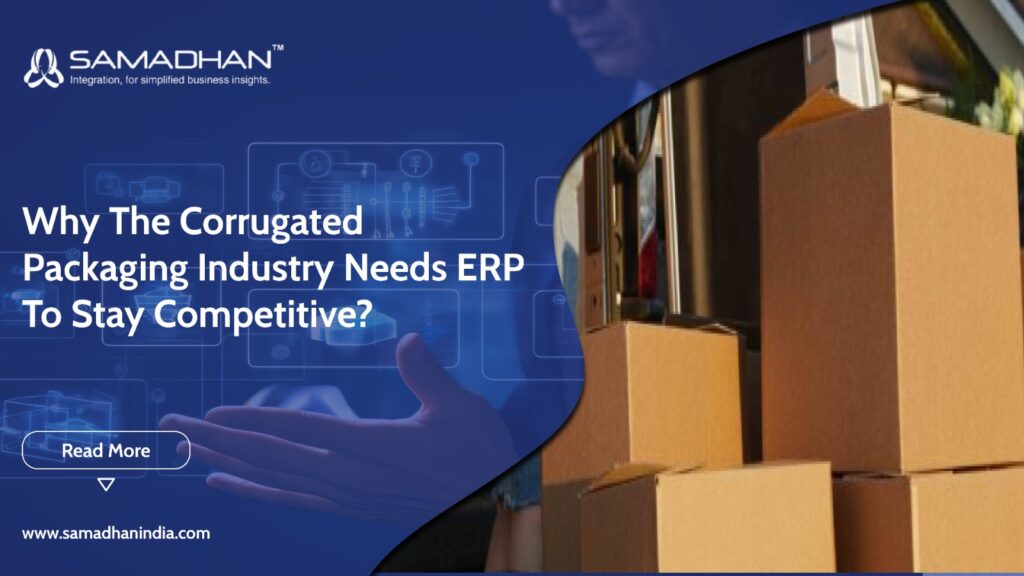ProPaper Dubai 2025: Rethinking the Future of Paper & Tissue Manufacturing in MENA

At the heart of the recent ProPaper Dubai 2025 event (13-15 October at Festival Arena, Dubai Festival City), industry leaders and technology providers gathered to explore the next chapter in paper and tissue manufacturing across the MENA (Middle East & North Africa) region. For Samadhan, the gathering offered more than a just a showcase of its Paper & Tissue ERP solution built on Microsoft Dynamics 365.
Demand Meets Complexity
Demand for tissue and hygiene-related products in MENA continues to grow, driven by rising urbanisation, tourism, and lifestyle shifts. According to a regional study, the paper packaging market in the Middle East was valued at US $16.70 billion in 2024 and is projected to reach US $25.90 billion by 2033 at a CAGR of 5.1 %. (Source: Grand View Research).
But growth alone no longer guarantees profitability. The market is becoming increasingly competitive with product variants such as brown tissues, 4-ply, AFH (Away from Home), wipes and hygiene formats entering the mainstream. The challenge now is how well manufacturers measure, control, and monetise every square metre converted, not just the tonne produced. The questions that need to be asked are: Are our current metrics hiding our inefficiencies? When you still report output in kilograms or tonnes rather than square or linear metres, you might be missing the invisible losses in yield, change-over waste, or downtime.
Sustainability Moves from Optional to Operational
Sustainability is no longer simply a brand claim. Consumer demand, regulatory mandates and financial pressures are converging to make it a business imperative. For example, the sustainable packaging market in MENA was about US $11 billion in 2022, with forecasts of reaching US $15 billion by 2028 at a CAGR of roughly 5%. (Source: Infinium Global Research)
This means that any manufacturing decision must now consider environmental impact, regulatory compliance and operational cost in single view. For instance:
- Can your ERP track water, energy, waste and carbon metrics per batch and link them to margin impact?
- Do you treat sustainability as a cost centre or as a profit lever?
Supply Chain and Trade Realities: The Uncomfortable Truth
Global trade volatility and tariff shifts are no longer hypothetical; they are impacting margins now. According to industry research, the tissue segment in the Middle East & Africa held about 28.5% of the regional pulp & paper market in 2024, advancing at a 5.9 % CAGR. (Source: Mordor Intelligence)
Many manufacturers we spoke with at the event admitted supply chain disruptions and imported raw-material cost swings are hurting working capital. In this environment, agility wins. The question for business leaders is: can your systems model tariff or freight cost shocks before they hit your balance sheet? If not, you’re operating with blind spots.
Technology Built for the Industry, Not Against It
What stood out at the event was that technology vendors who succeed are those who speak the language of the industry. Samadhan’s Paper & Tissue ERP, built on Microsoft Dynamics 365, incorporates features such as deckle optimisation, sustainability dashboards and natural‐language reporting. The advantage: finance, production and quality teams view one version of the truth in real time rather than multiple disconnected spreadsheets. The Best of Both Worlds.
Measurable Insights and Questions Every Leader Should Ask
Insights gathered from the event and market data surface several differentiators:
- Manufacturing excellence is shifting from volume-led to value-led. Tracking square metres instead of tonnes changes the game.
- Sustainability is rapidly becoming a competitive edge; those who integrate it win tenders and access new finance.
- Supply chain resilience is now a cost centre and strategic differentiator; legacy ERPs that cannot model incoming shocks are liabilities.
- Technology platforms that align with business strategy and operations become enablers of growth, not just tools.
Questions to reflect on:
- What is our per-square-metre yield loss today, and is our ERP capable of tracking it?
- How fast could we respond if energy costs or carbon tariffs doubled next year?
- When was the last time our finance and production teams used the same real‐time dashboard?
- Does our ERP scale with multi‐country, multi‐currency, multi-language operations without custom workarounds?
From Framework to Action
Implementing transformation means following a tactical framework:
- Clarity – Clean up data silos; unify production, finance, procurement and sustainability metrics.
- Control – Ensure real-time tracking of costs, materials and outputs with minimal manual work.
- Compliance – Embed sustainability, export controls and regulatory tracking as first-class modules.
- Collaboration – Remove departmental silos; align teams on one system and one version of truth.
- Competitiveness – Use real‐time insights to anticipate market shifts, adapt product lines and maintain margin despite external shocks.
Why This Matters Now
ProPaper Dubai 2025 made one theme clear: expansion without discipline is unsustainable. The manufacturers who thrive will not just add capacity; they will add clarity. They will measure what matters, use sustainability as strategy, turn data into decisions, and technology into advantage.
If your ERP isn’t evolving with your business demands, it may silently limit growth. The right system won’t just support you it will shape the future of your operations, turning compliance into strength, data into foresight, and efficiency into profit.
Final Thought
The question for leaders isn’t “Should we modernise?” It’s “Can we afford not to?” The next decade in MENA’s paper & tissue industry will be defined by those who move first, invest wisely, and lead with insights not just output.

